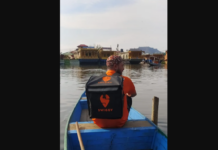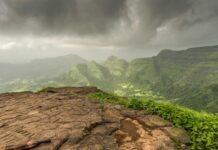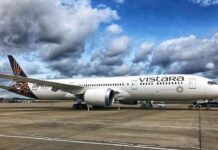
MELBOURNE, Fla.: In the winter of 1999, Rick and Suza Goltz – newly married and early retired from their jobs as engineers for the space shuttle program – set sail from Cape Canaveral with two cats on a 44-foot sailboat named Voyager on what they dreamed might be an around-the-world adventure.
Bill Clinton was president. John Glenn had just returned to space on shuttle Discovery. Cameras still required film.
Fourteen-and-a-half years, two presidents and 52,000 nautical miles later, the couple are back home, having fulfilled a dream to circumnavigate the globe.
Tired, yes. Savoring sleep in a California King bed. Enjoying the taste of a BLT? Definitely. “Do you know how many ingredients are in a BLT? The stars have to align to have them all at the same time,” Rick, 55, joked.
“Who knew we were going to be gone 14 years? … Who knew we were going to spend all those nights awake at sea,” Rick said. “In hindsight, I wouldn’t trade the memories for anything in the world. But I would never do it again.”
Their trip, documented by stories so numerous the couple tire of telling them, took the Goltzes and their cats, Schumi and Senna, from the swimming pool-like waters of the Bahamas, down the island chain of the Caribbean to the bustling Panama Canal. On a 23-day, 2,900-mile sail “across the Big Blue” from the Galapagos Islands off the western coast of South America to the Marquesas Islands in the South Pacific Ocean. They headed north to the Marshall Islands and then across 3,000 miles of Micronesia to Palau, the Philippines and Borneo.
The Goltzes were in Singapore when the 2008 financial crisis hit, stranding thousands of ships.
They enjoyed the exotic beauty of southeast Asia, and survived gale-force winds on the Bay of Bengal as they crossed to Sri Lanka. The couple trekked 1,500 miles up the west coast of India to Mumbai, only to turn back south due to the pirate threat on the route to the Mediterranean Sea.
They overcame the whimsy of Mother Nature to round South Africa’s Cape of Good Hope. Then, they hustled across the southern Atlantic, up the Brazilian coast and, eventually, back home.
They learned much about themselves, each other and the world.
The Goltzes saw the largely positive creep of technology (women in traditional dress, i.e. topless, sitting behind computers at a high school in Micronesia) and the negative consequences of global warming (taro, a food staple on some western Pacific islands, under threat due to rising waters).
They met queens of far-flung islands, a former prime minister and millionaire yachtsman. They got up close to penguins in South Africa, rode an elephant in Thailand and walked dusty streets in Mozambique.
They found that tuna were not biting as often as you’d think; sometimes, the Goltzes went 1,000 miles between a catch. And they confirmed that weather is king; it dictates when you sail and when you rest, demanding your attention and respect.
The couple’s odd shifts while working in the shuttle program (she worked third shift, he second) made the 24-hour captain duties on a “long passage” – where putting down an anchor is not an option – a little easier. She volunteered for nights so he (Voyager’s “captain”) could be alert during the critical daytime hours when Rick often mixed sailing with handyman repairs on the boat.
They endured big seas; sometimes, 18-foot waves.
“It’s just uncomfortable,” Rick said about the long passages through open waters. “It’s rough, and it’s wet, and it’s hard to sleep, and you always have to have somebody in the cockpit, so you’re wet and cold and when you go down, you’re covered in salt water … there’s nothing pleasant about being at sea.”
The sailing, Suza, 54, added, “is a means to get to the place. Once you get to the place, that’s when it’s special.”
The idea of a circumnavigation began gradually.
The couple started with a 34-footer they named Jazz (with the J in the shape of a saxophone), which the pair lived on from 1985 to 1989 while working at KSC; twice, they sailed to the Bahamas. It was a trial run: for them as a couple, as sailors, as possible around-the-world cruisers.
It went well. So they planned, and continued to save money.
By 1998, they were ready. To get married. To quit their jobs (they tapped into one of their 401k plans). To set off. Officially, they did it all on one day: Jan. 2, 1999. Wedding, retirement party, bon voyage celebration. She was 40. He was 41.
Jazz had served the couple well, but they needed a “blue water boat,” an ocean-going vessel. They’d found it in the Reliance 44: named Canajan A (owned by a Canadian couple. Get it? Canadian, eh?). “We changed that name real fast,” Rick said.
The newlyweds “cut their teeth” in the Bahamas, getting used to Voyager and cruising life. As they tooled around the Eastern Caribbean, they could drop anchor every night. In the daytime, they snorkeled and went ashore to hike or explore.
“My favorite part of cruising is right after the anchor goes down,” Rick said.
They made Voyager as homey as possible: spice racks, packed book shelves, watercolors hanging in the cabin walls. The yacht had a refrigerator and freezer. Rick could drink his rum-and-Coke over ice. But they had to collect rainwater to drink. They got used to ducking and climbing to get around their home.
As they island hopped, they worked up to two, three, five-day crossings and contemplated heading across the Pacific. But they weren’t ready. Because, with sailing, once you venture into the Pacific, it’s pretty much a one-way trip. Turning back is horrendously rough.
They needed more sailing time to feel comfortable.
By December 2000, they were ready: an eight-hour trip through the Panama Canal. “An engineering marvel,” said Suza, a mechanical engineer.
And that’s when the cruising really started. Panama to the Galapagos: 800 miles. Then another 23 days at sea. One of them always awake. No land visible. Just the two of them.
“I like it. To me, it is meditative,” Suza said. “She does it much better than I do,” Rick admitted. “I just sit there and feel sorry for myself, look at my watch and think about when I can go to sleep.”
Twice, the pair took breaks in their sailing trip to work and raise money, both times as civilian contractors at a U.S. Army base on Kwajalein Atoll in the Marshall Islands. The first time for just over two years to March 2004, the second from 2005 to 2008.
Then the pair headed toward Micronesia and Southeast Asia. Exotic. Beautiful. A highlight of the trip, they recalled.-AP






